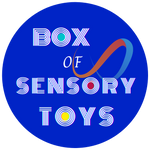No Products in the Cart
Stimming is self-stimulatory behavior. The behavior consists of repetitive actions or movements. Due to a what may seem like a fixiated preoccupation with subject matter, objects or movements, stimming is often more noticeable in people with developmental disorders, most typically Autistic Spectrum Disorders. Stimming is a well-known sign of ASD, OCD and Tourette Syndrome.
What most people do not recognize is that ALL people stim. Various stimming behavior is displayed by people daily at school, work or in daily situations, line tapping one's foot/leg or jiggling one's keys, while waiting in line at a bank or grocery store or fidgeting with the back of one's pen, while taking notes.
What Does Stimming Look Like?
Most people think of Stimming as flapping arms, rocking back and forth, bouncing, twirling over and over again on ground, and even head-banging. All of those are stimming behaviors; however, stimming can present itself in different ways than what people usually think it looks like.
The following are also Stimming behaviors:
- Humming
- Joint Cracking
- Nail Biting
- Chewing on different objects
- Grinding teeth
- Coughing repetitively
- Rapid eye blinking (repeatedly)
- Clenching one's fists
- Finger snapping, flicking fingers or scratching skin repetitively
- Tapping or covering/uncovering ears or objects
- Fidgeting with objects
- Any repetitive movement: spinning, twirling, pacing, etc.
- Requiring the feeling of different textures
- Bouncing one's legs
- Tasting, licking, finger sucking or tasting something one normally wouldn't
- Unusual (or inappropriate) smelling or sniffing of things
- Flipping lights off and on repeatedly
- Gazing into space or staring at objects like fans, lights, etc.
- Random shrieking, humming or other noises
- Repeating words or phrases (including TV show lines, song lyrics, etc.)
Why Do People Stim?
Stimming self-soothes, helps with self-regulation, and may help a non-verbal person to communicate with others. If a person feels anxious or overwhelmed, it can be his or her way of calming his or her mind. While stress or anxiety can cause stimming to develop as a response, the opposite can also happen.
For instance, when a person is bored or does not have a set task to focus upon, stimming can become a way for the child or person to deal with excess thoughts, feelings, energy that is displaced. A state of calm is not always due to an idle body or unoccupied mind. In people with ASD, OCD and some cases of Tourette syndrome, this can actually create the opposite. It can create a sense of panic.
Stimming often allows a person to calm down and/or self-regulate his or her emotions. Repetitive motions, such as those made with a fidget toy or tool, may allow people to clear their head of distractions and to stay focused. This focus clears a path for the person to be able to study, read, do better at school or work. This is especially true of people with sensory issues, ASD, ADHD and others. This is why fidgets are now viewed as learning tools (at school or work) to help students or workers improve their studying or work.
Do People Who Do Not Have ASD Stim?
Some forms of stimming are common and may even be necessary to a child’s overall development. Often infants or toddlers suck on their thumbs. Young children like the textures of their stuff animals, soft blankets, toys. They might hold a special stuffed animal, blanket or soft toy for comfort.
If looking at behaviors as a condition of seeking a neurodiverse diagnosis, please remember that each person is an individual. Each case should be appropriately assessed by a professional, who can better answer this question based on the child/person's overall history and personal assessment.
As they are growing and learning, children find ways to self-sooth from stress and learn ways to focus their minds. For example while sitting in a school chair, a child might bounce his or her legs back and forth or might have a difficult time sitting still, which is very common. Likewise, many adults often stim in a similar way with hair twirling, bouncing legs, clicking pens and so on.
If we were to assess ourselves, many of us would find that we have some behaviors which would be classified as "stimming." Stimming and the use of hand fidgets for productivity have become quite common in both the classroom and workplace.
The bottom line is that using fidgets have definitely become more main-stream in the last few years. Studies have shown that physical movement, or stimming, can assist (all) people with cognitive activities; therefore, studies have proven fidgets to be useful learning tools.


